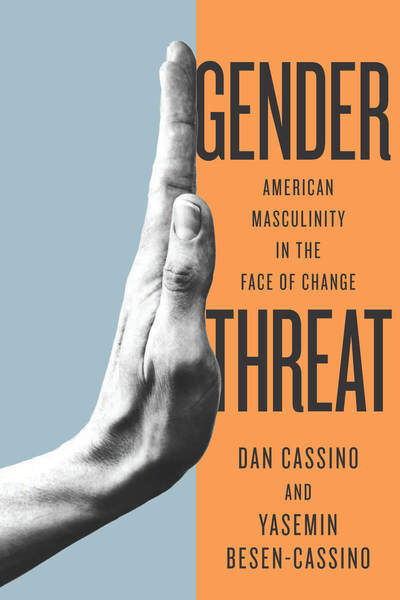American masculinity has been in a slow-moving crisis for decades. This seems bizarre in a country where men have an uninterrupted 46 and 0 streak of winning the Presidency, control 73 percent of Congress, and 92 percent of Fortune 500 companies, to say nothing of earning (depending on how you calculate it) 10 to 22 percent more per hour than women for the same work. Women making up 8 percent of Fortune 500 CEOs, or 27 percent of Congress may not seem like anything to cheer about, but these figures represent high water points in the US, and movement like these has led an increasing number of men to believe that they are facing discrimination on the basis of their sex. When you’ve been on top for a few hundred years, movement towards equality feels like discrimination, and in the face of that perceived discrimination, men are acting out.
This matters because so much of the way men in the US construct their masculinity is based on economic and social dominance. So, when those ways of asserting their gender identity stop being available to them, they find other sometimes novel ways to demonstrate their masculinity. Many pre-modern societies had set ways for men to show their gender identities, rituals that marked the passage between boy and man. In the US today, we still have some notion of these rituals: being a man means being married, having children (or at least the capacity to do so), and providing for that family as the primary breadwinner. The problem is that these ways of asserting masculinity are increasingly outdated, forcing men to find new ways to assert their gender identities.
Our new book, Gender Threat, looks at the ways men assert their masculinity under conditions of threat to their gender identities. Those threats can be specific, like starting to earn less money than a spouse, or more diffuse, like the possibility of a woman being elected President. Men who see such changes as being a threat to their gender identities – and not all men do – feel the need to assert their masculinity in some other way in order to compensate.
While assertions of masculinity have been a part of political campaigns throughout US history, the candidacy of Hillary Clinton for President in 2016 seems to have served as a different kind of threat to many men’s gender identities. Especially given that her run for the Presidency was set in sharp relief by the gender-based appeals of her opponent, gender identity threat among men led them to support the Republican candidate, rather than Clinton. But this wasn’t a case of men becoming more conservative in the face of threats to their masculinity – although that happens as well – as threat did not make them less likely to support Clinton’s more liberal primary opponent, Bernie Sanders. Nor did the political impacts of threatened gender identity stop there: even in the 2020 primary and general elections, the effects of masculinity, and threats to it, were evident.
Many of these compensatory behaviors are socially undesirable. For instance, threats to married men’s earnings relative to women are linked to increases in reports of workplace sexual harassment. When men feel like they have lost on avenue to assert their gender identities (e.g. breadwinner status), they find another (e.g. by demonstrating their gender to other men in their workplace).
Other compensatory behaviors seem to be tied to social norms. For instance, we demonstrate that economic threat to men leads to increases in gun purchases (as measured through background checks): but the effects are much larger in states where there are already many guns in circulation. Similarly, we show that threats to gender identity in the form of questioning a man’s sexuality lead to an increase in the number of men identifying as born again or evangelical Christians. But again, this seems concentrated in certain parts of the country. Having a firearm, or saying that you’re part of a more traditional religious group might be an effective way to demonstrate masculinity, but only in areas where those signals are common enough to be recognized by others.
Men’s gender identities, and their perceptions of threats to them, shape the way that men live their lives: what housework they do or refuse to do: how much pornography they consume and what kinds; the relationships they have with their partners and their children. While this has always been the case, recent Presidential elections and resistance to public health measures during the COVID-19 pandemic have shown that these aren’t personal issues, but matters of public concern.
The good news is that masculinity is flexible. Men can and have found ways to assert their gender identities that are socially desirable: they can show mastery and risk-taking by cooking exotic or challenging foods; they can focus on being parents or preserving the health of their families; or even being leaders in their community. All of these behaviors are contextual, and societies can shape the way that men express their masculinity, pushing them towards ways that benefit everyone. Studying gender is often synonymous with studying women; but we think that understanding where our society is, and where it’s going necessarily means understanding men.
Dan Cassino is a professor of Government and Politics at Fairleigh Dickinson University, and the Executive Director of the FDU Poll. You can follow them on Twitter @DanCassino
Yasemin Besen-Cassino is professor and Chair of Sociology at Montclair State University. She also currently serves as the editor of Contemporary Sociology. You can follow them on Twitter @besencassino


Comments